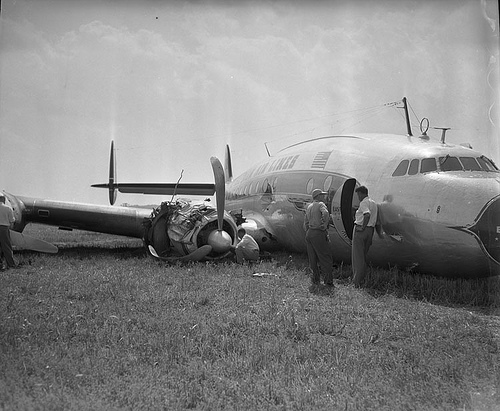
Read Time= 4 Minutes
Because real world aviation is very critical, pilots like me must maintain certain proficiency requirements. This means that within X amount of time we have to do X if we want to do X.
For example, here’s a short list of some of the more pertinant requirements I maintain as a private pilots:
- Within 90 days I must do 3 takeoffs and landings in order to carry passengers
- Within 90 days I must do 3 takeoffs and landings to a full stop in order to carry passengers at night
- Within 6 calender months I must do at least 3 approaches, holding procedures and navigational tracking if I want to fly IFR (instrument flight rules)
- Every 30 days I must do a VOR check on the aircraft to ensure that errors are less than a specified amount (for the kind I do, less than 6 degrees between the two VOR signals in the air)
- Every year an aircraft must get an annual inspection in order to stay airworthy (legal)
For different ratings and aircraft types, it gets even more complicated.
These rules are in place so we all stay safe. For example, you may think it silly that landings must be made to a full stop in order to carry passengers at night, but there’s a reason. Night time flying can be very deceiving, and landing can be quite tricky with a lot of visual illusions.
So how does this relate to flight simmers?
Tonight I was able to finally load up my simulator after a bit of downtime due to some PC issues and lack of internet (my wife and I moved to a new apartment). I loaded up my PMDG MD11 is Angle of Attack colors and did a good little hop from Anchorage (where I was born) to Seattle.
For those of you familiar with the MD11, or any heavy aircraft for that matter, these things aren’t that easy to fly. It takes years of knowledge and know-how to proficiently operate these aircraft.
Well, having been down and out for a while, I found myself 20 thousand feet above the final approach course, way too fast and really not much of a clue what to do next.
My wheels eventually met pavement, but I did not feel good about my performance at all!
What can we sim pilots do to stay proficient in our aircraft of choice, or just flying for that matter? Let me suggest 7 things that may help you to avoid a situation like what I went through.
- PRACTICE
- STUDY
- FOCUS
- COMPETITION
- REPETITION
- RECENCY
- FEAR
- COMMIT
You’ve heard it been said time and time again; “Practice Make Perfect”. Although you won’t meet many perfect pilots (perhaps the last one was Charles Lindbergh) you can always strive to do much better. Practice is key to any profession, and as a simpilot, whether virtual or not, this is especially important and fits perfect at number 1.
Any great pilot must study his/her heart out. One of the things that continues to intrigue me about aviation is how fast paced it is, and how much more there always is to learn. I expect that I will never learn even a fraction of the available knowledge out there, and to be honest, that excites me. Whenever you hear a pilot say, ‘I know everything’, it’s time to turn and run the other way! A safe and great pilot is one that is respectful to the fact that he doesn’t ‘know it all’.
Focus is a bit of a scary word when it comes to aviation. Say I am approaching an airport during an instrument approach. I want to get my speed RIGHT ON so I am dialed right in and focusing on keeping it 1 knot +/- from the desired speed. All the while, I forget about the altitude and BAM!, I hit a tower because I descended below a safe altitude.
Focus in the case of proficiency isn’t so bad. I tend to fly only one aircraft in real life, and therefore I get to focus on one set of procedures. When I come back over to flight simulation, I find it difficult to remember all the procedures for the different aircraft I fly. If I was to focus on one aircraft at a time, both flight simulator and the real world, I’m much more likely to be proficient in what I’m doing. It’s all about staying AHEAD of the aircraft.
Be competitive, even if it’s with yourself. Always strive to fix your mistakes that you had from the last flight, or at least improve. For you this may mean remembering to turn on your landing lights during a busy approach sequence, or even kissing the wheels on the correct spot on the runway, rather than floating than SLAMMING down.
The beauty of flight simulator is also the vice. The world is at our finger tips. We don’t have to travel across the globe to fly past the Pyramids of Giza, or land on a Glacier in Alaska. Rather, we load up the flight near those locations and we go check it out. This is really fun, but if you’re looking to take a professional approach to flight simulator, you’ve got to subject yourself to some boring behavior. Here’s what I mean.
If you were to fly the same route, say a reasonable 3 times in a row, I GUARANTEE your third flight will be the best of the bunch. Why? You’re familiar with the area and what is going to happen, as well as the procedures that go along with it. Give it a shot!
Flying often is important. The more you fly, the more likely you are to retain information. This is the simplest of these ideas, and really makes the most sense.
Do something crazy, wild and scary. It’s flightsim, and you can load it right back up anyway! Put yourself in a situation where you only have one choice; to land! Other things you could try are trying to climb over a nearly impossible peak, a crazy crosswind landing or landing in no visibility. All of these situations separate the men from the boys, and make better sim pilots out of all of us.
Make a schedule for yourself and keep it. Just because government agencies like the FAA and JAA make rules for all of us, doesn’t mean we have to abide by what they say… we can do BETTER. There are many rules that I go above and beyond with and play it extra safe, and others that I follow the rules right on the line of legality. Set your schedule for flying, commit to it, do it, and make your own personal minimums for what you can/can’t do.
Please note: We reserve the right to delete comments that are snarky, offensive, or off-topic. If in doubt, read the Comments Policy.

